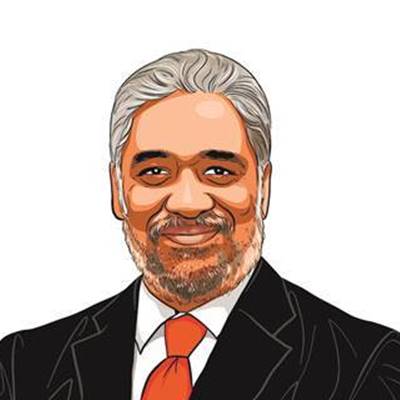Opinion From 2014 to 2024
A fortnightly column on the high politics of the Af-Pak region,the fulcrum of global power play in Indias neighbourhood.
From 2014 to 2024
As Washington and Kabul negotiate a strategic partnership agreement,the idea that the US troops will vacate Afghanistan by 2014 is now receding. Gaining ground is the prospect that US will maintain a significant military presence there,including access to a few military facilities,until 2024.
The date,2014,set by President Barack Obama,concerned ending the combat role of US troops in Afghanistan. Implicit in that statement was the proposition that the US will retain a training mission.
At the end of last June,Obama made it plain that the US will retain capability (read bases) in Afghanistan to target the sources of international terrorism in the region (read Pakistan).
If Kabul does want to be abandoned by Washington in 2014,the US has enough interests of its own to maintain an effective military profile in Afghanistan. The question is of defining mutually acceptable terms for security cooperation between Afghanistan and the United States.
That precisely is what Washington and Kabul have been negotiating in recent months codifying the nature of bilateral military cooperation after 2014.
In a report from Kabul,The Daily Telegraph (London) quoted the Afghan national security adviser,Rangeen Daftar Spanta,as saying that a substantive US military presence is necessary to train Afghan forces after 2014.
Kabul also wants the US to maintain sufficient airpower and intelligence capabilities to boost ANAs ability to counter the many national security threats facing it. The continued presence of US Special Forces will be seen in Kabul as an insurance against terrorism from across the Durand Line. On the question of bases,Spanta insists that they will be Afghan-controlled and the US will have access to them on terms to be negotiated with Kabul.
The talk of US bases in Afghanistan will inevitably complicate the proposed reconciliation with the Taliban,which has made the withdrawal of all foreign forces as a precondition for any dialogue with Kabul.
Iran has never been too comfortable with the US military presence in Afghanistan and is bound to oppose its extension. A strong American military presence beyond 2014 will complicate the Pakistan armys calculus on extending its influence into Afghanistan. Russia and China are also wary of US bases in Afghanistan.
The Daily Telegraph reports that Washington and Kabul hope to resolve the remaining differences in the draft strategic partnership agreement in the coming weeks and have it ready for signature by December,when the international community meets in Bonn to discuss Afghanistans future.
India-Russia dialogue
This month marked the 40th anniversary of the Indo-Soviet Treaty of Peace and Friendship that was signed by the then-Prime Minister Indira Gandhi and President Leonid Brezhnev on August 9,1971.
The treaty was about India redressing an adverse turn in the regional balance of power amidst the Sino-Soviet conflict and the Sino-US rapproachement at the turn of the 70s. The treaty provided critical international support as India prepared to liberate Bangladesh from Pakistan at the end of 1971. India,in turn,did not join the rest of the world in condemning the Soviet occupation of Afghanistan at the end of 1979.
The collapse of the USSR saw Delhi and Moscow replace the 1971 treaty,which had explicit mutual security commitments,with a more modest one in 1993. However,as Afghanistan enters a critical phase,ten years after 9/11,India and Russia will need to deepen their dialogue on regional security.
Russias leverage in Afghanistan is likely to increase,as the northern distribution network running in part through Russian territory begins to reduce the USs logistical dependence on Pakistan. While Moscow demurs on US bases in Afghanistan,it is engaged in a broader reset of bilateral relations with Washington.
Gandhara art
An exhibition of Gandhara artifacts from Pakistan has opened to rave reviews at the Asia Society in New York. The exhibition showcases the rich cultural heritage of Pakistan and Afghanistan,at a time when the Taliban and its allies are bent on destroying the regions great inheritance. While the war between the US and the Taliban tends to reinforce the presumed divide between the West and the East,the Gandhara art points in a different direction.
The arrival of Alexander the Great at the Indus in the 4th century BC marked the flowering of an extraordinary cultural intercourse between the Greek and Indian traditions. This east-west fusion reached its perfection in the Gandhara art. One hopes the Asia Society,which has a chapter in Mumbai,and the government of Pakistan will find ways to bring the rare Gandhara exhibits to India.
The writer is a senior fellow at the Centre for Policy Research,Delhi




